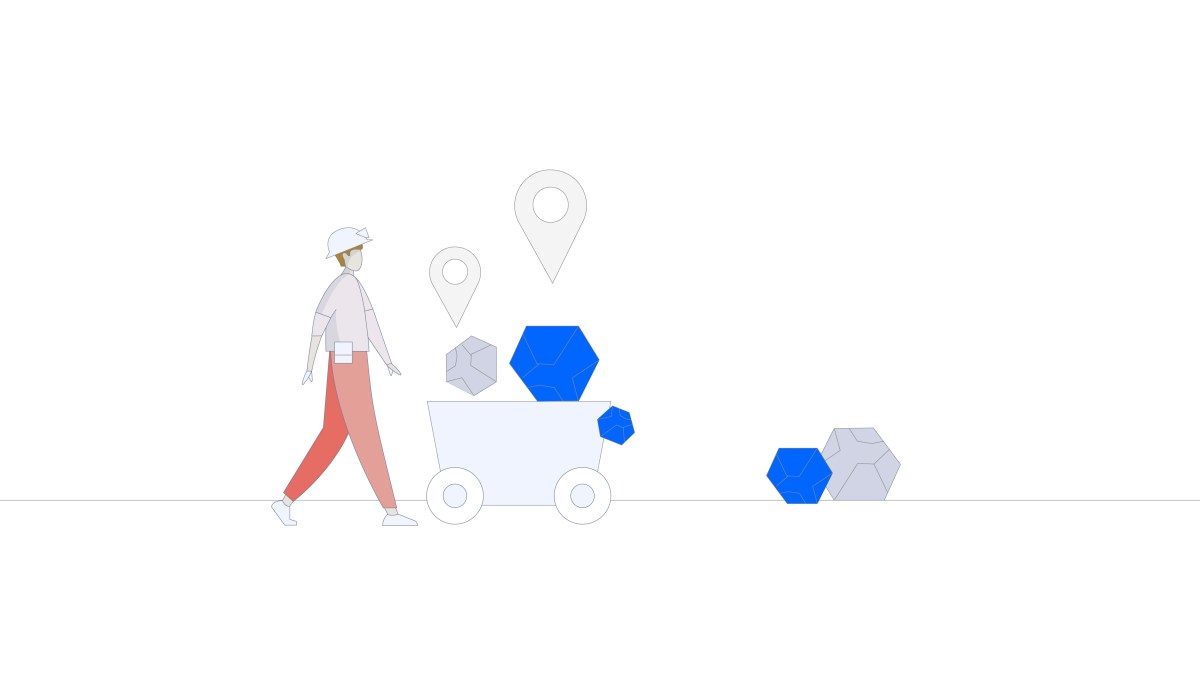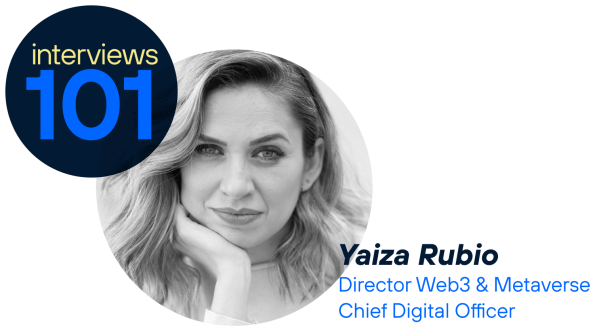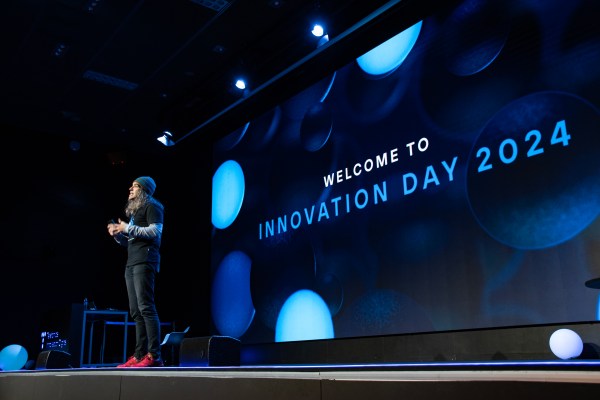Startups in the DAaaS space offer API-first back-office solutions for operations with digital assets. They help orchestrate different solutions into singular simple integrations, that let their clients launch digital asset products and services. An example of these solutions is fast and easy regulatory compliance (for example KYC and AML) thanks to API-enabled compliance infrastructure. Other examples of DAaaS back-office operations are custody, payments, brokerage.
These startups are betting on the future broader adoption of digital assets, beyond the more well-known cryptocurrency use cases. Mass adoption may be fuelled by the possible embrace of Central Bank Digital Currencies (CBDCs) in numerous countries and a global movement toward clearer regulations around digital currencies and assets.
Understanding Digital Assets
At its core, a digital asset encompasses anything created and stored digitally, possessing identifiable and discoverable qualities while providing inherent value.
Our focus, however, narrows down to digital assets residing on distributed ledger technologies, particularly blockchain. These assets span a spectrum of categories, including nonfungible tokens (NTFs), cryptocurrencies (such as Bitcoin and altcoins), tokens, tokenized assets, security tokens, and, notably, Central Bank Digital Currencies (note: CBDCs will not necessarily leverage blockchain technology, and could well exist without that technology).
An Emerging Space: Digital-Assets-as-a-Service
DAaaS essentially consists of back-office solutions to streamline operations related to digital assets. Its primary goal is to unify and orchestrate various solutions into seamless and straightforward integration processes. Key operational areas include KYC and AML compliance, custody, payments, and brokerage.
Consider the following benefits for businesses and individuals entering the digital asset space:
- Cost Reduction: DAaaS eliminates the need for parallel integration projects with each tool, such as KYC, AML, exchanges, and payments, resulting in significant cost savings.
- Facilitating Operations: A DAaaS platform could coordinate the entire workflow in one centralized location, providing a user-friendly experience for both businesses and end-users.
- Plug & Play Integration: A single implementation covers the complete lifecycle of the digital asset, expediting market entry and reducing the complexity of integration.
- Flexibility for Diverse Use Cases: DAaaS offers adaptability, connecting traditional finance with Web3. This adaptability opens a gateway to various use cases and end-user products and services.
- Orchestration, Not Duplication: DAaaS doesn’t involve offering individual services for digital asset exposure. Instead, it orchestrates these services, providing a cohesive and integrated solution.
Why Now?
As the industry continues trudging through the cryptowinter (and glimmers of a possible cryptospring appear), DAaaS entrepreneurs have picked up on signs of a future broader adoption of digital assets, such as the post-FTX-crypto winter global regulatory trend, and the possible adoption of CBDCs in various geographies. Investment in blockchain technologies by players in the financial and digital asset industries, as exemplified by the recent launch of the Canton Network (backed by the likes of BNP Paribas, Goldman Sachs, Deutsche Börse Group, among others), further bolster these intuitions. The approval of Bitcoin Spot ETFs by the Securities Exchange Commission in the USA has generated great excitement for this space in 2024.
Lastly, Sam Bankman-Fried’s sentencing and Binance boss CZ’s pleading guilty to US federal charges signal to the industry that the space is, at least for now, no longer a playground for bad actors. These factors signal a possible shift in cultural beliefs about digital assets, towards a greater sense of security, transparency and trust.
Non-crypto businesses may feel more comfortable in a post-Wild-West future of digital assets. They could be willing to seize opportunities arising from offering products and services that leverage digital assets in diverse and innovative ways. But this will entail transactional and regulatory complexity, a problem that DAaaS startups are already solving for their customers today.
How is DAaaS different from Blockchain-as-a-Service?
DAaaS simplifies transactional and regulatory complexity. Turnkey compliance of regulations protecting consumers is an important value proposition in this space.
Blockchain-as-a-Service (BaaS) on the other hand, simplifies technological complexity. BaaS allows organizations to access and use blockchain technology without the need to set up and maintain their own blockchain infrastructure. BaaS providers offer pre-built blockchain platforms and tools that simplify the development, deployment, and management of blockchain applications. Users can leverage these services to create, deploy, and manage smart contracts, conduct transactions, and benefit from the security and transparency of blockchain technology without the complexities of running their own blockchain nodes. BaaS is often used in various applications such as supply chain management, identity verification, and financial transactions.
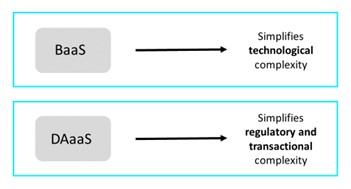
How are DAaaS startups different from more well-known players such as exchanges and wallet providers?
DAaaS startups are not primarily focused on the exchange business, or other first-hand participation in cryptocurrency markets. Rather, they are focused on providing non-crypto native business the infrastructure and know-how so that these can offer their customers their own innovative digital asset products and services.
Some of the most relevant companies that are already helping to shape the DAaaS paradigm are:
- BitGo is an operator of digital asset management software that intends to make digital currencies usable for business in a regulated economy. The company’s platform offers various services to keep Bitcoin secure from theft and loss and also offers an enterprise suite of services for Bitcoin-related portfolio management, corporate treasury and enterprise enablement.
- ZeroHash is a B2B developer embedded infrastructure platform designed to allow any platform to integrate digital assets natively into its own customer experience. The company handles the entire back-end complexity and regulatory licensing required.
- Copper.co is a custody infrastructure designed to offer secure and compliant custody to institutions seeking to engage with digital assets.
- Stably offers a multichain tokenization services and a platform that provides fiat-to-crypto gateways and multi-asset wallets, enabling FinTech, blockchain, and institutional businesses to turn traditional assets into crypto assets or exchange fiat currencies for cryptocurrencies, stablecoins, and tokenized assets.
- Anchorage Digital is a regulated platform designed to facilitate simple and secure participation in digital assets, all integrated with custody. The company’s application offers modern security engineering for secure crypto custody, trading, staking, and governance.
At Wayra we have closely followed how digital assets are revolutionizing the transformation of the most traditional businesses. Thus, in 2023, Telefonica Ventures invested in the company Bit2Me, a cryptocurrency exchange that offer, among other products, all their functionalities in an API for enterprises enabling movement between physical and digital assets, offering custodial services, digital transformation, and fund mobility services, enabling enterprises to tokenize, custody, trade, and settle assets while eliminating operational inefficiencies and reducing risks. This API is already implemented by Telefónica to allow the purchase of devices with crypto at Tu.com
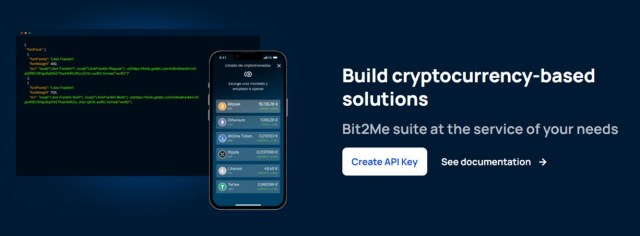
Source: Bit2Me
Wayra invests in Depasify, our DAaaS bet
We recently invested in Depasify, a Spanish startup that offers a back-office solution for digital assets operations that unifies the various solutions, KYC and AML, custody, payments and brokers, under a single integration and orchestrates the entire end-to-end value chain. Depasify’s infrastructure connects the different layers of technology needed for digital asset management under one contract, simplifying reconciliation and reporting.
There is great fragmentation in the market for digital assets; the large number of stakeholders makes it difficult for many companies to go to market. The degree of openness of companies to these digital assets depends on their ability to manage the relationship with the different suppliers needed for the operation, as well as the internal know-how to integrate it.
This translates into operational problems, as companies do not have a back office adapted to the requirements to allow the reporting and reconciliation, compliance problems, AML policies are complex as they depend on local regulation, whereas crypto allows to operate globally, implying a high cost for companies that operate with digital assets and problems with the stakeholders, as there are several areas involved in operating with digital assets; requiring an orchestration for the correct operation.
Conclusion
The future of digital assets (including but not limited to digital currencies) relies on the power of blockchain technologies, and powerful features such as tokenization and smart contracts. Today and moving forward, this technology is navigating a steady course towards increasing prevalence in mainstream commerce, a trajectory that is being supported by regulatory and central bank tailwinds. Mainstream business could find comfort with these two factors and might nudge them to gradually dip their toes in the world of tokenization and digital assets.
In conclusion, as we witness the rise of Digital-Assets-as-a-Service, we find ourselves at the beginning of what could be a future where digital assets are part of our day-to-day. The orchestration of digital asset services marks a pivotal step towards a future where the barriers to entry are lowered.
